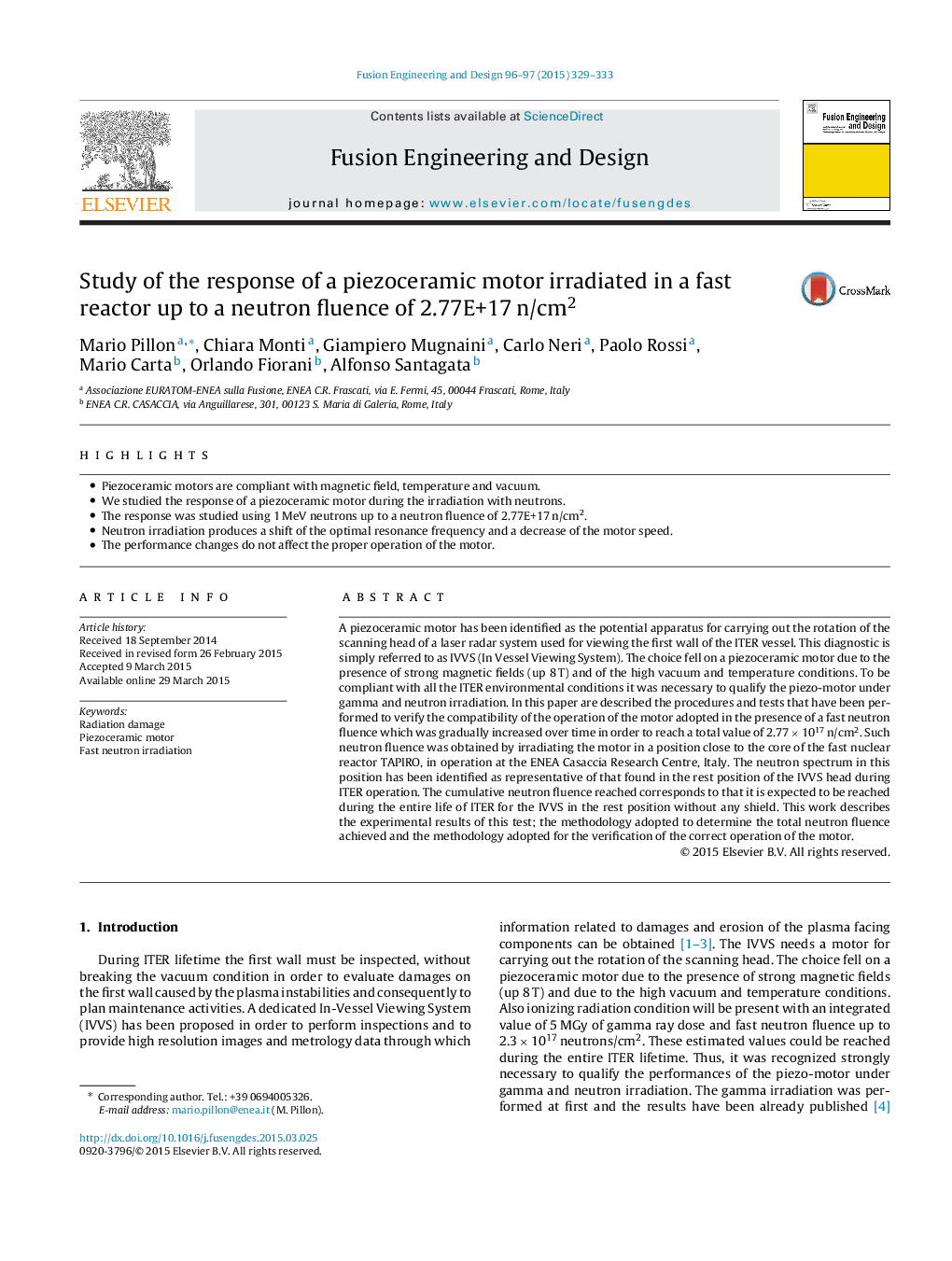| Article ID | Journal | Published Year | Pages | File Type |
|---|---|---|---|---|
| 6746238 | Fusion Engineering and Design | 2015 | 5 Pages |
Abstract
A piezoceramic motor has been identified as the potential apparatus for carrying out the rotation of the scanning head of a laser radar system used for viewing the first wall of the ITER vessel. This diagnostic is simply referred to as IVVS (In Vessel Viewing System). The choice fell on a piezoceramic motor due to the presence of strong magnetic fields (up 8Â T) and of the high vacuum and temperature conditions. To be compliant with all the ITER environmental conditions it was necessary to qualify the piezo-motor under gamma and neutron irradiation. In this paper are described the procedures and tests that have been performed to verify the compatibility of the operation of the motor adopted in the presence of a fast neutron fluence which was gradually increased over time in order to reach a total value of 2.77Â ÃÂ 1017Â n/cm2. Such neutron fluence was obtained by irradiating the motor in a position close to the core of the fast nuclear reactor TAPIRO, in operation at the ENEA Casaccia Research Centre, Italy. The neutron spectrum in this position has been identified as representative of that found in the rest position of the IVVS head during ITER operation. The cumulative neutron fluence reached corresponds to that it is expected to be reached during the entire life of ITER for the IVVS in the rest position without any shield. This work describes the experimental results of this test; the methodology adopted to determine the total neutron fluence achieved and the methodology adopted for the verification of the correct operation of the motor.
Related Topics
Physical Sciences and Engineering
Energy
Energy Engineering and Power Technology
Authors
Mario Pillon, Chiara Monti, Giampiero Mugnaini, Carlo Neri, Paolo Rossi, Mario Carta, Orlando Fiorani, Alfonso Santagata,
